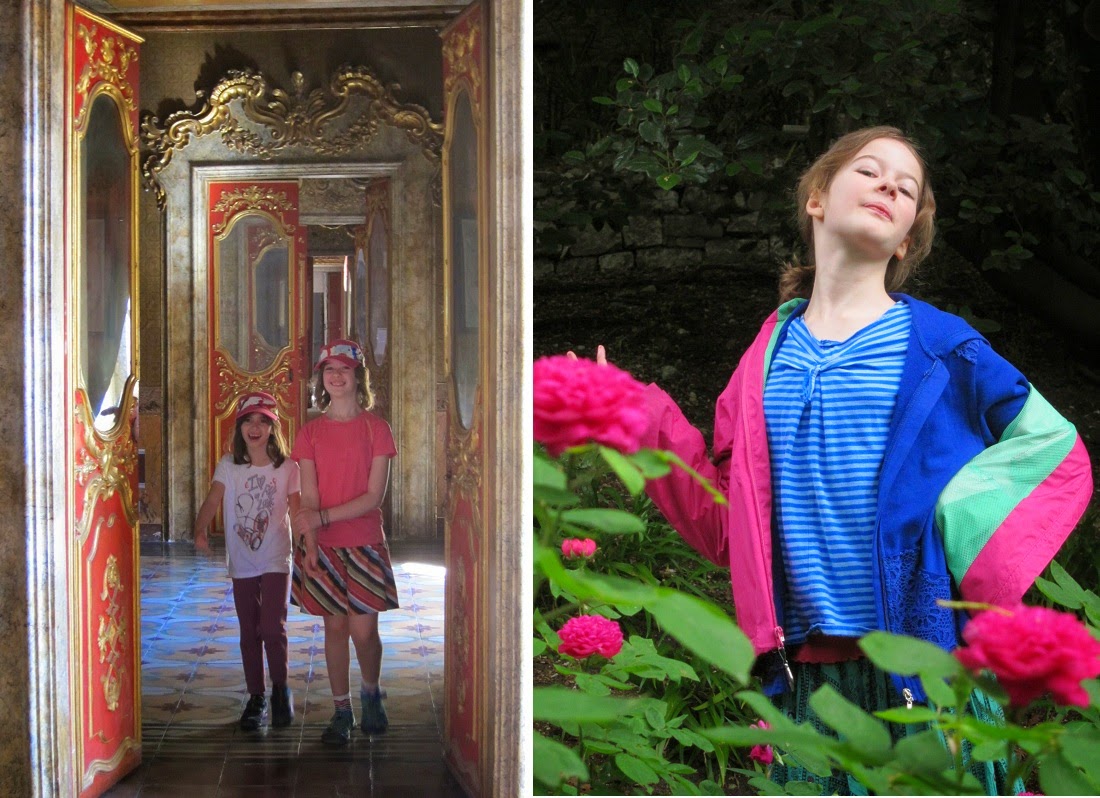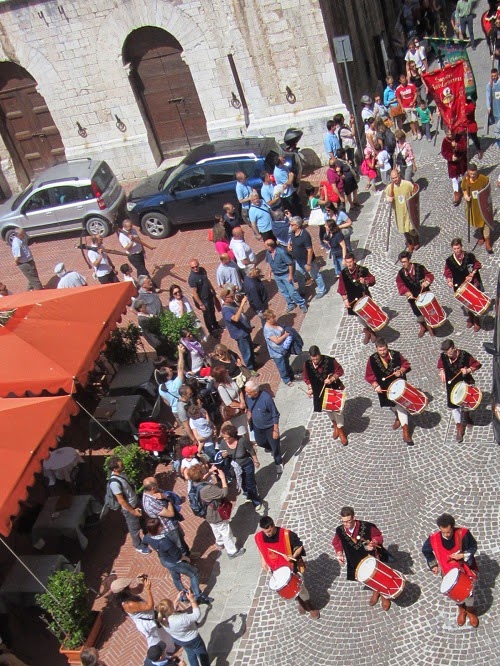Palazzo Ranghiasci
Palio della Balestra
Our visit coincided with a traditional crossbow competition, between the archers of Gubbio and nearby Sansepolcro.
We were woken by the early morning proclamation announcing the competition, which has taken place in the palace square since at least the 15th century.
 |
| Video Clip Here |
Early Saints
Our visit also followed the steps of Saint Francis, Santa Chiara, and Saint Ubaldo. Admittedly, we cheated a little by taking a funivia up the hill to the Basilica of Saint Ubaldo (where his 900 year old mummified body is visible for all to venerate)! But walking the streets and hillsides of the medieval towns was breathtaking, both for the beauty and the sense that very little has changed about these places for hundreds of years.
Our wonderful hosts took us to the K–T boundary at the end of our stay. Gubbio happens to be the location where geologists first noticed the sudden change from fossil-rich white layers of stone (from the Cretaceous period), to the brownish/red Tertiary beds which are surprisingly depleted in fossils. Further study of these rocks (and others around the world) lead to the realization that this boundary line marks the mass extinction of dinosaurs, likely from asteroid or meteorite impacts. The impact for us was to conclude our trip by adding about 65 million years to the timeline we retraced!






















.JPG)
.JPG)


.JPG)



.JPG)


